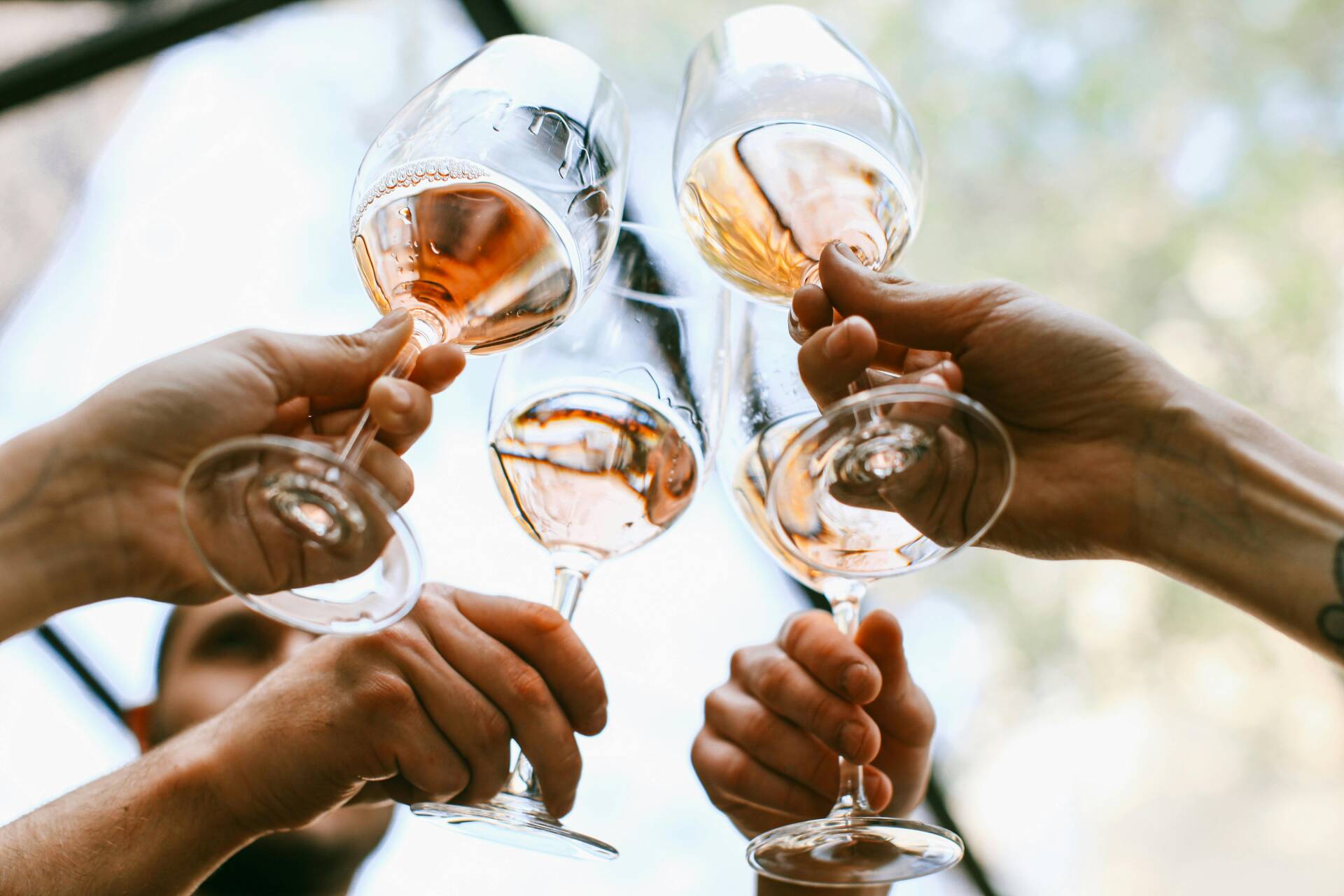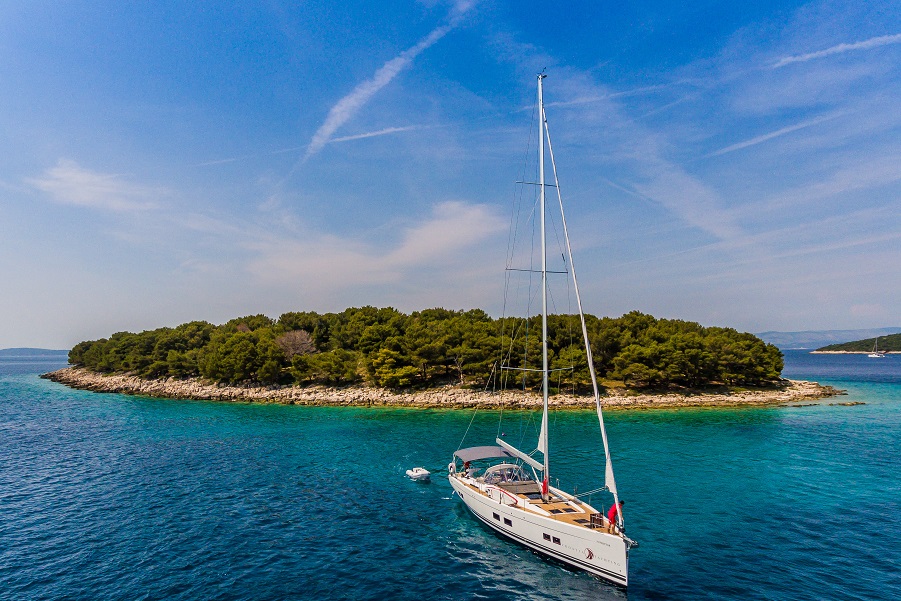Fast food and wine? This seemingly incompatible combination is a hedonistic hit

Table of Contents
- From ritual to revolution
- Gastro pop culture
- Wine meets everyday life
- Label, price & attitude
- A new logic of pleasure
- New Hedonism: between irony and sincerity
- The history of unexpected wine pairings
- Sociocultural significance
- Wine as a medium of social change
- Croatian wine scene and a new generation of drinkers
- Practical examples from Croatia
- Wine and digital culture
- Between tradition and new enjoyment culture
Wine used to carry an aura of seriousness – the ritual of decanting, the appropriate temperature, carefully selected food, the exact arrangement of glasses... But nowadays, in the age of digital culture, the approach to gastronomy has undergone a complete transformation. Instead of perfectionism, playfulness and spontaneity take center stage. Young, curious, and somewhat ironic food lovers are embracing wine as the perfect partner to their favorite pizza, chips, and burger.
This new “democratization of wine” speaks volumes about changing social values and is clearly visible on the Croatian wine scene. One of the first to recognize this is Marija Vukelić, wine promoter, educator, and editor of the magazine Vinske zvijezde. Through her workshops and festivals, Marija has been demonstrating for years that wine isn’t just a privilege reserved for white tablecloths and high sommelier standards.
“Wine is a story about the moment,” she emphasizes. “That moment doesn’t have to be a formal dinner.”

From ritual to revolution
The symbol of this change often hides in seemingly trivial pairings. For example, during the Salon pjenušavih vina in Zagreb, Marija and her colleague Nina Levičnik decided to pair sparkling wine and various types of crispy meaty snacks – thin, medium-fat, and very fatty, almost like chips.
“At a conference in Zagorje, we tasted three sparkling wines of different sweetness levels – extra brut, brut, and demi-sec – paired with several types of crunchy snacks that surprisingly matched the sparkling styles, especially the brut,” Marija recalls. “The audience most enjoyed realizing that wine doesn’t have to be seriously pretentious to be good.”
This simple yet almost self-ironic combination opened the door to a new type of wine relationship. The focus shifted from “rules” to experience, moment, and texture. Wine no longer remained a luxurious finishing touch — it became a companion in spontaneity.
Gastro pop culture
In the age of social media, food has become both a visual and social medium. Viral trends such as pairing wine with McNuggets or a glass of rosé with cheetos crackers are no longer seen as individual eccentricities but as part of a culture defined by humor and irony. “With a generation raised on TikTok, wine is no longer ‘adult beverage’. It’s part of expression, style, and even attitude,” Marija explains.
This distanced yet curious approach to gastronomy creates a space where irony becomes sophisticated. By parodying luxury, these trends actually revitalize wine culture. Beneath the humor lies a sensitivity to balance, texture, and taste — the very heart of wine culture.

Wine meets everyday life
Marija emphasizes that young people are eager to try new wines — as long as they are not imposed by rigid rules. “For beginners or those just entering the world of wine, fresh, semi-dry wines with nice aromatics are ideal. Traminac, muškat, light pinot noir - these are wines that don’t burden but invite.”
Her workshops often witness a magical moment when someone tries sparkling wine with pizza for the first time and is surprised how well it works. “In that moment, wine stops being an academic category. It becomes a social experience, rhythm, and atmosphere.”
We are also increasingly seeing the return of rosé to everyday life — despite prejudices, it has proven to be one of the most flexible wines to pair with street food. Accompanying a burger, ćevapi,or even fries, rosé brings a refreshing and playful note.
Label, price & attitude
Wine with an attractive label, priced up to thirty euros, and a touch of residual sugar is no longer a sign of superficiality but a new language of hedonism. “The label is no longer just a design but a means of communication,” Marija points out. “If a young person is attracted by the name, color of the bottle, or description on the label, that’s the first step. It’s crucial to open paths towards exploration. Wine then becomes a dialogue, not a sommelier’s exam.”
This aesthetic of accessibility does not negate knowledge but transforms it into experience. What used to be a symbol of elitism now fosters connection and community. Wine is coming back to the people.
A new logic of pleasure
Behind the “wine and fast food” trend lies more than a fad. It reflects how modern people want to enjoy life — without imposed rules, but with attention to detail. In a world of rushed meals and online aesthetics, wine brings a fragment of calm while staying in tune with real-life rhythm.
Marija sums this up simply: “The best wine is not the most expensive, but the one that sparks an emotion. If you drink it with pizza, crunchy snacks, or chips with a smile — that’s wine’s victory. Wine is emotion, not protocol.”
New Hedonism: between irony and sincerity
Ultimately, the trend of pairing wine with junk food is not a rebellion against tradition — it’s its reinterpretation. Irony, play, and accessibility have become new forms of luxury, not measured by price but by freedom.
This is a new, urban wine culture — free of dogma, full of passion. In a world where both rosé and a burger can share the same table, wine finally becomes what it always should have been: the drink of life, for everyone.
The history of unexpected wine pairings
Although this seems like a fresh trend, the idea of pairing wine with informal food has deeper gastronomic roots. As early as the 20th century, while wine was traditionally associated with fine dining, in some social circles it was customary to toast with a simple sandwich or fried food.
True change came in the second half of the century with the evolution of restaurant concepts and dining culture. With the rise of fast food and busy lifestyles, wine had to find its way onto everyday tables and less formal occasions.
By the late 20th and early 21st century, with the increasing presence of wine shops, bars, and approachable restaurants, wine began to reach a mass audience. The step to pairing wine with food once considered “junk” was short.
A cultural shift towards casual wine culture was further bolstered by a global internet food religion. YouTube reviews, blogs, and today’s TikTok influencers present wine not just as the domain of elite gourmets but as a part of daily indulgences.

Sociocultural significance
This surprising trend is not merely a gourmet whimsy but an expression of broader social change. Today’s youth increasingly reject rigid norms and pretentiousness in food and drink. In an age of rapid change and digital communication, wine has become a medium for expressing individuality and creativity.
Wine, once a symbol of residential prestige and class distinction, is now deconstructed as an element of community and accessibility. Pairings like sparkling wine with crunchy meat snacks or rosé with burgers reflect today’s sociocultural values — inclusivity, experimentation, and authenticity.
At the same time, the trend reminds us that wines, like food, are living art and an expression of tradition in constant evolution. It brings vitality to the wine scene and opens spaces for innovative interpretations.
Wine as a medium of social change
Informal wine and fast-food pairings are deeply embedded in a social context that celebrates both ease and complexity. They are manifestations of postmodern hedonism where play and irony meet genuine pleasure. Rosé with burgers or sparkling wine with meaty crunchy bites is not just an experiment, but liberation from traditional constraints.
This shift was unimaginable a few decades ago when wine symbolized alienation and complexity. Today, wine acts as a bridge between generations, connecting experienced sommeliers and those discovering aromatic layers through salty chips.
As Marija notes, wine with residual sugar and an attractive label can serve as a perfect starting point for wine adventures. Wine thus becomes more than a drink — it is a social phenomenon, a means of connection and creative expression.
Croatian wine scene and a new generation of drinkers
Deeply rooted in tradition and terroir, the Croatian wine scene today experiences a wave of change thanks to younger generations rewriting the rules. They seek spontaneous, authentic flavors and are less burdened by formalities, inspired more by sensory experiences wine offers.
“Young people come with different expectations — they want wine that’s easy to drink, sociable, affordable, yet characterful,” explains Marija. This new urban approach connects tradition with modernity.
The trend is reflected in production as wineries increasingly focus on approachable sparkling, rosé, and fresh white wines, with an emphasis on label design and lifestyle appeal, not just terroir.
Practical examples from Croatia
Some wineries from Slavonia and Istria have embraced changes by launching sparkling wines with vibrant, modern labels inviting informal gatherings. Rosé has become an everyday wine with character, fitting casual dishes like burgers and ćevapi.
Labels often involve contemporary artists and feature simple, engaging descriptions encouraging relaxed enjoyment without pressure.
Marija highlights that this synergy of lifestyle, design, and wine strengthens Croatia’s presence on the global wine map — not only through premium wines but also through everyday pleasures.
Wine and digital culture
Social platforms and online wine communities greatly accelerate the spread of this trend. Viral tasting videos pairing wine with bakery or fast food show just how embraced this culture is among youth.
Lifestyle portals like journal.hr contribute to demystifying wine, presenting it as an accessible, fun category.
Between tradition and new enjoyment culture
This paradigm shift is visible at wine festivals, educational events, and interactive workshops that open doors for more inclusive and engaging experiences. “From serious sommelier lexicon to connecting through food, music, and friendship — that’s the evolving tone of wine,” says Marija.
Within this context, the union of wine and “junk food” no longer sounds like a contradiction but a genuine expression of pleasure. Wine has become a daily companion — sometimes sophisticated, sometimes simple, but always personal.
Since this phenomenon transcends purely market or wine definitions, it emerges as a social movement and emancipation from rigid wine rules.
















